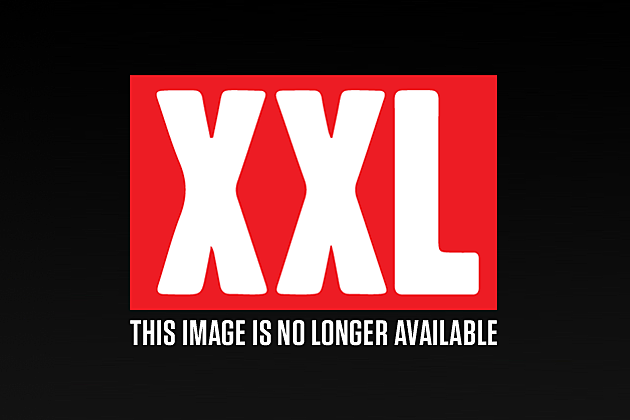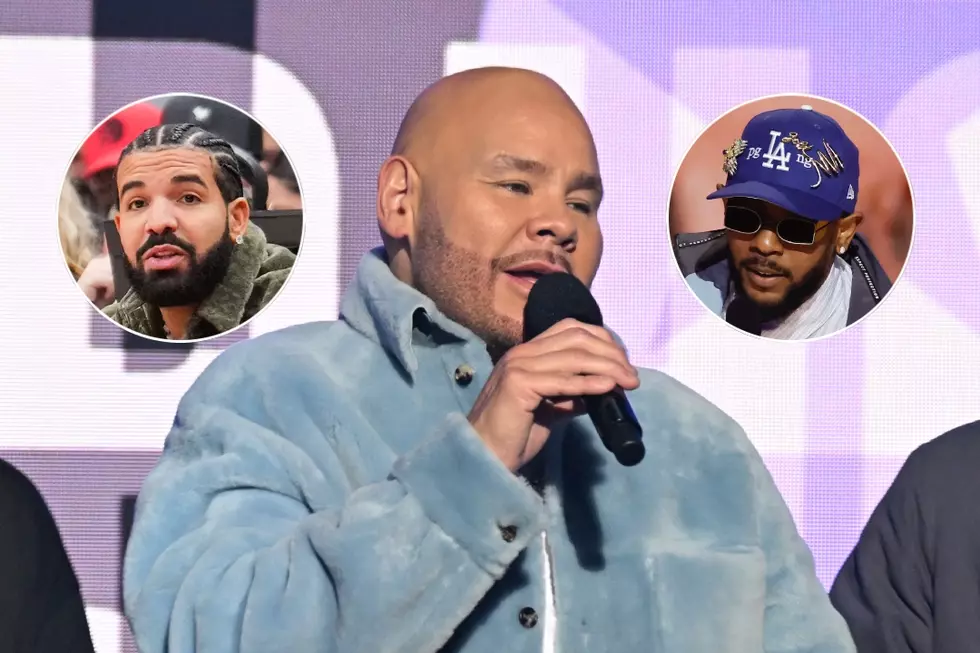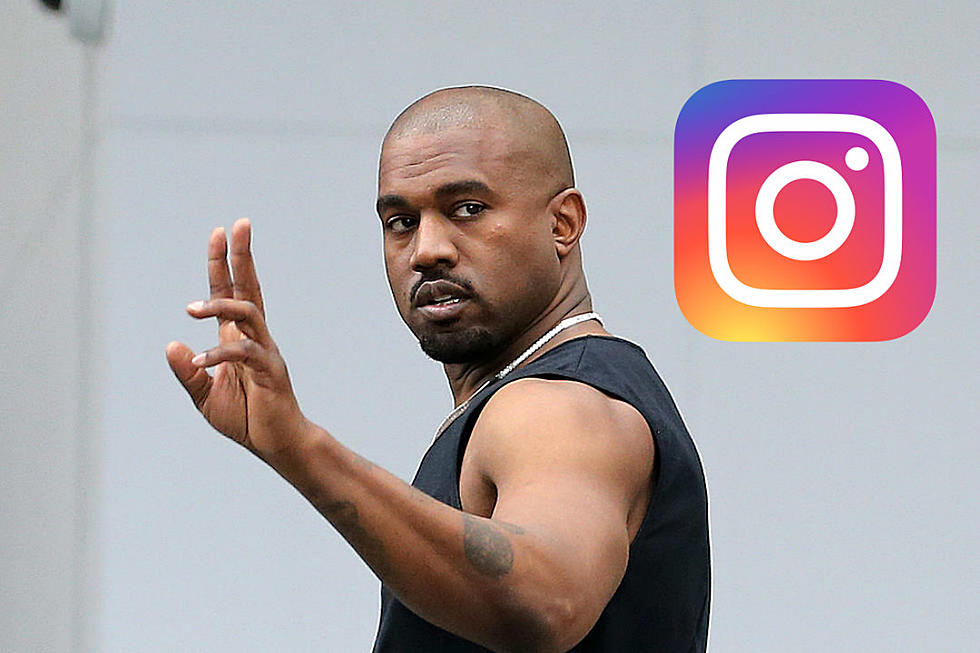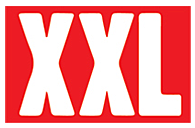
Shawn Gee Explains Developing the Tour Strategy for Lil Wayne, Kanye West, Drake & More
When the biggest rap stars in the world go on tour, they need someone coordinating the strategy behind their excursions. For some of hip-hop's most notable names—Lil Wayne, Kanye West, Drake, Nicki Minaj, and J. Cole—that man has been Shawn Gee. As President of Music and Entertainment at SEFG LLC and Head of Touring for Blueprint Group, he also dons various titles that include tour producer, business manager, and tour manager. During his lengthy career, the music industry vet has been instrumental in some of the most memorable hip-hop tours in recent years (including Yeezy's "Glow In The Dark," Weezy's "I Am Still Music," and Drizzy's "Light Dreams and Nightmares" to name a few). XXLMag.com caught up with Gee to find out about his plans to take Lil Wayne global, Kanye's creative strategy for touring, why Drake picks his own openers and more. —Adam Fleischer (@AdamXXL)
How did you get involved in the behind the scenes of touring?
I have a business management firm. My first client was The Roots back in the mid to late ’90s. If you know anything about The Roots, you know for the first 12 to 15 years of their existence, it was all about building a tour strategy, earning money, building a profile, and building their brand on the road. They used to do 100 to 150 shows a year. I learned the touring business from an organic perspective that most business managers didn’t learn. My second client was Jill Scott. Again, her career was built more on the road than in the traditional sense. I learned the business of touring from a ground-up perspective. I formed a relationship with Gee Roberson when I represented Kanye West—from '05 to '10. Gee and I worked together pretty closely. I helped build and develop Kanye from a club and college act to the arena act that he is now.
How do you take someone like Kanye or Wayne from doing clubs and colleges to doing big stadiums?
Let’s talk Wayne. It’s not a cookie cutter, but there are some core tenets to touring. First is being strategic about it. A lot of acts are reactive, not proactive. When I started working with Wayne in 2008, it’s not like we had to build him from the ground up. He had already been in the business for ten years and been on the road a lot, but he had more of a reactive strategy—meaning, where is the money, let me chase it, where are the opportunities, let me go after it. Versus a proactive strategy, and I think that’s what I bring to all of my clients. I look at where they are, where they want to be. I don’t look at what the next step is, I look at two to three steps down the road, where do you want to be, and what’s the right step to get you closer to that.
For Wayne, he had been a support act on a lot of relatively large hip-hop oriented tours, but he had never really headlined a full-fledged arena tour on his own. So that was our goal: to come in and build him into a headline arena-touring artist. Step one was finding a national tour partner that believed in him and believed in our strategy. We did so with Al Haymon and Live Nation. Step two was allowing myself to build a team around him—a tour team on the execution side. We brought in Curtis Battles, who had worked with everyone from Madonna to Eminem, he was my guy with Kanye as well for a couple years.
Wayne loves to work. What we had to do is build a strategy and show him the vision on how we’re gonna build and grow. Again, it’s more about being proactive. That’s the key to success.
When Wayne is in this spot now, where he’s doing big arenas all around the country, what’s the next step?
Next step is global. From 2008 through 2010, we achieved our domestic goal, which was to really solidify him as a true headline artist in the arena and amphitheater space, which culminated last year with I Am Still Music. I believe it was one of the top ten grossing tours of the year, domestically. What Wayne hadn’t done up to that point in his career has really built his brand internationally and globally. That’s been the goal for 2012 and beyond. We started at the end of last year with the Australia and Africa shows, but 2012 and beyond is to really build him to become a global touring force. International is a whole different animal. You really have to go out and develop those markets, and that’s something that he hadn’t done in his career. With Nicki and Drake, we’re focusing on that early in their career—building and developing those markets.
What’s the difficulty in initially breaking into those markets?
The earlier the better. I work with J. Cole. At this point in Cole’s career, the earlier the better. He’s truly developing the European market at the same pace we were developing the domestic market. Same thing with Nicki Minaj. Her first headline tour is going to be launched in Australia, Japan, and Europe before we bring it to the States. The real issue becomes when it’s developed unevenly. That’s a problem that artists face, where they’re big as hell in the States, and then when they go overseas it’s an uneven development, which hurts you from a production standpoint.
How do you approach what you’re doing differently from one superstar to another, like Wayne and Kanye, to then someone who’s not quite at that level like J. Cole?
It’s really just tailoring it based upon the need and strength of the client. Kanye is a creative genius, and I learned a lot from working with Kanye—just how to balance the business side with the creative side. Everything that you see, from the color of the light on a particular song to the outfit that a background singer would be wearing, he put that together. With Kanye, you have to let the creative come first, then the business aspects overlay, so he’s able to get out his full creative thought. With Wayne, he’s more about the connection to the fans. He also approved the creative, but he’s not as involved in the development of the creative as Kanye. I have to choose my role based on the particular team and artist that I’m with. Sometimes I’m leading the strategy, sometimes I’m part of the strategy development. It varies.
What goes into putting a lineup together?
It was a defined packaging strategy with Wayne, because we were redefining his brand in the touring space, and making the package such that it attracts the different demographics within Wayne’s fan base. If you look at the very first I Am Music Tour that we did, we had T-Pain on there; he and Wayne had several songs. But then we also threw in the Gym Class Heroes. Wayne is a fan of the band, and the Wayne consumer, if you look at their playlist on their iPod, they have songs by the Gym Class Heroes, along songs by T-Pain; it’s not like the Wayne demographic only listens to hip-hop. We also had Keri Hilson open on that tour. A certain segment of Wayne’s demographic is female and listens to R&B. We want to build a package such that it makes every segment of Wayne’s fan base comfortable in coming to see the show.
The core tenets of touring are pricing and packaging. You want to make sure that you price yourself based off the ability for the consumer to pay; you don’t want to price your ticket too high where people won’t come. You also want to over deliver a great package to them.
With Drake, he takes the lead in developing his packages and it’s truly based upon what he’s feeling and listening to at that particular moment. From a management side, we tailor it per client. When Cortez [Bryant] was sitting down with Drake, he’s listening to Drake from a packaging perspective, but when we’re sitting down with Wayne, we make recommendations.
What’s the most difficult thing about what you do?
I won’t even call it difficult. I think the most defining thing is really getting an artist to buy into the strategy. Getting an artist to understand the strategic long-term view. Once they understand that, everything else becomes simpler. If there's an artist, who thought they're an arena artist, and was worth 10,000 tickets in New York—I always tell people, if you’re worth 10,000 tickets, then you should be playing a theater. You should be selling 5,000 and leaving 5,000 people outside wanting and waiting for the next time you come to the market. Because those 5,000 that couldn’t get in, they’re going to tell three or four of their friends that couldn’t get in. Plus, the 5,000 that did get in, they’re going to tell two or three of their friends if you put on a great show. Your demand of 10,000 has immediately grown to 40,000. That’s why when you go play the arena, sell 15,000, and leave people outside. You always want to leave demand. You don’t want to sell every ticket. This is not a sprint. It’s a marathon. Any artist that has a successful touring career has realized it’s about the one-on-one connection with your fans, it’s about building your base, it’s about multiple visits to the market, and building each market individually that’s going to create that aggregated momentum. That’s going to drive for that arena status.
More From XXL









